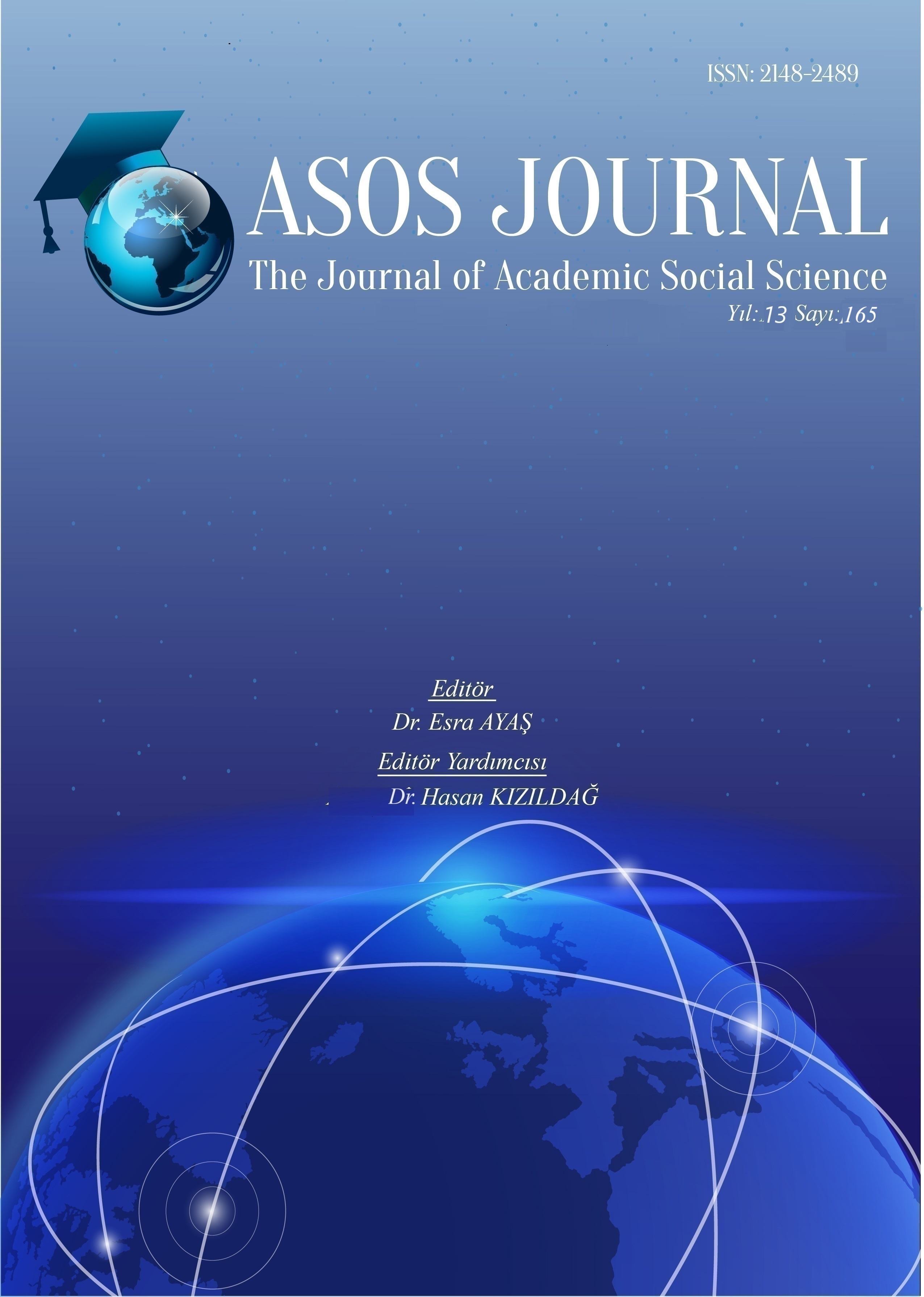Author :
Abstract
Toplumsal bir retorik olarak tarih boyunca karşımıza çıkan kadın ve erkek olma durumu, günümüz dünyasında tanımlanan rollerde ufak çaplı değişimler görülse de çoğunlukla benzer şekilde devam etmektedir. Tanımlanan bu roller biyolojik cinsiyet odağında geliştirilmiş toplumsal cinsiyet kavramı doğrultusunda kalıplaşmıştır. Farklı disiplinlerde ele alınan toplumsal cinsiyet kavramının temelinde beden olgusu yer almaktadır. Bu bağlamda kadın bedeni üreme ve cinsel haz ile ilişkilendirilmektedir. Kamusal alandan ziyade ev ile özdeşleştirilen kadının sorumluluk alanı evi ve ailesidir. Kanıksanan bu algı kadınların özgürlüğünü sınırlandırmaktadır. Feminizm temelinde ele alınan bu tahakküm problemini çözüme ulaştırmak adına birçok çalışma yürütülmüştür. Yürütülen çalışmalar doğrultusunda elde edilen hak ve özgürlükler bulunsa da toplumsal olarak geliştirilen cinsiyet rolleri erkek açısından üstün bir konumu garantilemektedir. Kadınlar ve ötekileştirilen diğerleri ise arka planda kalmaktadır. Günümüz tıbbi ve teknolojik gelişmeleri ile birlikte Post-hümanist felsefe bağlamında Donna Haraway’ın bedenin sınırlarına dair ortaya koyduğu “Siborg Manifesto” beden ve cinsiyet ötesine dair yeni bir perspektif sunmaktadır. Bu perspektif beyaz erkek dışında tutulan tüm ötekiler açısından yeni olanaklara imkân tanımaktadır. Dolayısıyla sanat tarihi boyunca popülerliğini yitirmemiş olan beden kavramı farklı biçimlerde güncel sanat pratikleri içerisinde yer almaya devam etmektedir. Bu doğrultuda, Post-hümanist bağlamda kimlik, cinsiyet ve beden olgularının yeniden yapılandırılması Joanna Grochowska, Uffe Isolotto, Lucy McRae ve Bart Hess, Asger Carlsen, Ali Alışır, Patricia Piccinini gibi sanatçıların eserleri üzerinden okunmaktadır.
Keywords
Abstract
As a social rhetoric, the status of being a woman and a man, which we have encountered throughout history, continues to be mostly similar, although there are minor changes in the roles defined in today's world. These defined roles are moulded in line with the concept of gender, which was developed in the focus of biological sex. The concept of gender, which is handled in different disciplines, is based on the phenomenon of body. In this context, the female body is associated with reproduction and sexual pleasure. Identified with the home rather than the public sphere, the woman's area of responsibility is her home and family. This taken-for-granted perception limits the freedom of women. Many studies have been carried out in order to solve this domination problem, which is addressed on the basis of feminism. Although there are rights and freedoms obtained in line with the studies carried out, the socially developed gender roles have a superior position for men. Women and others who are marginalised remain in the background. With today's medical and technological developments, Donna Haraway's ‘Cyborg Manifesto’ on the limits of the body in the context of post-humanist philosophy offers a new perspective on beyond the body and gender. This perspective allows new possibilities for all others other than the white male. Therefore, the concept of the body, which has not lost its popularity throughout the history of art, continues to take place in contemporary art practices in different forms. In this direction, the reconfiguration of identity, gender and body in the post-humanist context is read through the works of artists such as Joanna Grochowska, Uffe Isolotto, Lucy McRae and Bart Hess, Asger Carlsen, Ali Alışır, Patricia Piccinini.





